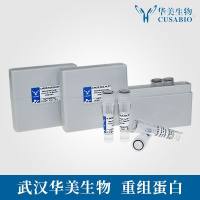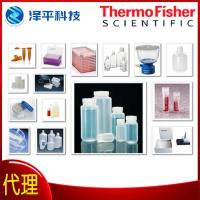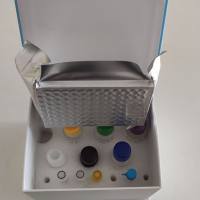Using ProSight PTM and Related Tools for Targeted Protein Identification and Characterization with High Mass Accuracy Tandem MS Data
互联网
- Abstract
- Table of Contents
- Figures
- Literature Cited
Abstract
ProSight PTM v2.0, neuroProSight, and the Sequence Gazer allow the identification and characterization of proteins from high mass accuracy tandem mass spectrometric data of intact proteins and large peptides. Input data consists of one or more neutral precursor ion masses and a set of neutral b/y or c/z . fragment ions masses. This data is compared against ?shotgun annotated? proteome databases or known protein sequences. With these tools it is possible to not only identify unknown proteins, but to determine the location of post?translational modifications (PTM) with 100% sequence coverage. Collectively, the tools create a search environment that allows five different search modes, including absolute mass and sequence tag searching, which are conveniently employed via a graphical user interface. Data management and chemical noise reduction tools are also available. These tools provide a complete environment for the identification and characterization of proteins from high resolution tandem mass spectrometry of intact proteins and large peptides. Curr. Protoc. Bioinform. 19:13.6.1?13.6.28. © 2007 by John Wiley & Sons, Inc.
Keywords: top?down; intact protein; post?translational modification (PTM); sequence tag; protein identification; protein characterization; Web
Table of Contents
- Introduction
- Strategic Planning
- Basic Protocol 1: Performing an Absolute Mass Search
- Basic Protocol 2: Performing a Sequence Tag Search
- Basic Protocol 3: Performing a Neuropeptide Search
- Basic Protocol 4: Using the Sequence Gazer
- Alternate Protocols
- Alternate Protocol 1: Performing a GRAM Search
- Alternate Protocol 2: Performing a Single Protein Mode Search
- Support Protocols
- Support Protocol 1: Obtaining and Configuring User Accounts
- Support Protocol 2: Uploading Data and Maintaining an Account
- Support Protocol 3: Using Noise Reducer
- Commentary
- Literature Cited
- Figures
- Tables
Materials
Figures
-

Figure 13.6.1 Flow chart detailing the relationship of the various protocols presented in this unit, and their use in identifying and characterizing proteins via top‐down mass spectrometry. View Image -

Figure 13.6.2 Partial Sample of Absolute Mass Search Results. Information returned from an absolute mass search is organized into several blocks. Each search may have a Search Comment (Label A), which is free form text that is associated with the search. The comment is a convenient place to store notes about the results of the search, or which hit is thought to be the correct characterization. The Search Parameters block (Label B) stores all of the parameters used to generate the results below. Each completed search has a Add Gene Restricted Search using these hits button (Label C), which is explained in . All results have a color‐coded legend (Label D) that is used by the Fragment Map. The column labels at the top of each set of search results (Label E) are controls that will sort the associated search results. Each hit also has a Take to Sequence Gazer button (Label F) that will load the hit into the Sequence Gazer (). View Image -

Figure 13.6.3 The Main User Interface to the Sequence Gazer. The Sequence Gazer is centered on an Interactive Fragment Map (Label A). Selecting any amino acid in the map will update the Amino Acid Information box (Label B). Current global search parameters are displayed in the block labeled C. Each of these elements is a control that can be altered prior to rescoring. The current value of all scores is shown in the Scores block (Label D). Fixed modifications can be applied to amino acids with the controls in block E. View Image -

Figure 13.6.4 The Data Manager of a New Account. Each experiment has seven context‐sensitive controls associated with the icons to the right. The meaning of each icon is shown in the inset below them. Open and Closed toggles are also highlighted with an inset. View Image -

Figure 13.6.5 The Experiment Adder Interface. Adding an experiment to a ProSight application requires completing the three mandatory sections of the experiment adder. Block A, the Experiment Data, requires selecting the fragmentation method used to generate the MS2 data. Block B is for entering the MS1 data, while Block C is for the MS2 data. Notice that the manual fragment ion intensity box may be left empty, and all MS2 fragment masses will be given an intensity of 1. View Image -

Figure 13.6.6 Typical Noise Reducer output. The Noise Reducer highlights three different mass differences. Fragments separated by exactly 1.0 Da (Label A) are potentially isotoping errors. Only manual inspection of the source spectra can determine which is the correct value, so all fragments separated by exactly 1 Da are shaded blue. Label B shows fragments consistent with an ammonia loss. The lighter fragment would be deleted, and is shaded blue. Likewise, Label C shows a water loss. In all cases, the user places a check mark in the box to the right of the fragment to mark the fragment for deletion. View Image
Videos
Literature Cited
| Horn, D.M., Zubarev, R.A., and McLafferty, F.W. 2000. Automated reduction and interpretation of high resolution electrospray mass spectra of large molecules. J. Am. Soc. Mass Spectrom. 11:320‐332. | |
| LeDuc, R.D., Taylor, G.K., Kim, Y.B., Januszyk, T.E., Bynum, L.H., Sola, J.V., Garavelli, J.S., and Kelleher, N.L. 2004. Prosight PTM: An integrated environment for protein identification and characterization by top‐down mass spectrometry. Nuc. Acids Res. 32:W340‐W345. | |
| Mann, M., Meng, C.K., and Fenn, J.B. 1989. Interpreting mass spectra of multiply charged ions. Anal. Chem. 61:1702‐1708. | |
| Meng, F.Y., Cargile, B.J., Miller, L.M., Forbes, A.J., Johnson, J.R., and Kelleher, N.L. 2001. Informatics and multiplexing of intact protein identification in bacteria and the archaea. Nat. Biotechnol. 19:952‐957. | |
| Pesavento, J.J., Kim, Y.B., Taylor, G.K., and Kelleher, N.L. 2004. Shotgun annotation of histone modifications: A new approach for streamlined characterization of proteins by top down mass spectrometry. J. Am. Chem. Soc. 126:3386‐3387. | |
| Reid, G.E., Shang, H., Hogan, J.M., Lee, G.U., and McLuckey, S.A. 2002. Gas‐phase concentration, purification, and identification of whole proteins from complex mixtures. J. Am. Chem. Soc. 124:7353‐7362. | |
| Southey, B.R., Rodriguez‐Zas, S.L., and Sweedler, J.V. 2006. Prediction of neuropeptide prohormone cleavages with application to rfamides. Peptides 27:1087‐1098. | |
| Zabrouskov, V., Senko, M.W., Du, Y., Leduc, R.D., and Kelleher, N.L. 2005. New and automated msn approaches for top‐down identification of modified proteins. J. Am. Soc. Mass Spectrom. 16:2027‐2038. | |
| Key References | |
| Kelleher, N.L. 2004. Top‐down proteomics. Anal. Chem. 76:196A‐203A. | |
| This is the most current review of the top‐down technique. | |
| Reid, G.E. and McLuckey, S.A. 2002. ‘Top down’ protein characterization via tandem mass spectrometry. J. Mass Spectrom. 37:663‐675. | |
| An earlier overview of top‐down proteomics. | |
| Internet Resources | |
| http://prosightptm2.scs.uiuc.edu/ | |
| Home screen for ProSight PTM version 2.0. | |
| http://neuroprosight.scs.uiuc.edu/ | |
| Home screen for neuroProSight. | |
| http://sequencegazer.scs.uiuc.edu/ | |
| Entry point for the standalone Sequence Gazer. | |
| http://www.ebi.ac.uk/RESID/ | |
| Entry point into the RESID database. All protein modifications supported by ProSight PTM v2.0 and neuroProSight come from this database. |









